Sexuality in American Superhero Comics
Comic books first appeared in the United States in 1933 with Famous Funnies. This was a reprinting of comic strips that appeared in the daily newspapers in the funnies section. The issues for this series did not follow an original storyline but instead served as a compilation of different titles. The first comic book that featured a character that could be deemed a superhero was Phantasm in 1936. Nearly eight decades later superheroes are still extremely popular. With the passing decades, the genre of superhero comic books has morphed to fit the changing American culture so that it can continue to thrive as an industry. One of the areas that has been changing is the representation of different sexualities in the superheroes and villains.
Sexuality has been, and still is, a controversial topic in American society, as well as other societies around the world. With the concept of sexuality being controversial, it has not gotten much representation in the media until fairly recently. With the intolerance for sexualities that differ from heterosexual becoming less prevalent in American culture, the media has had more freedom in covering this topic without receiving a bunch of backlash from their target audience and society as a whole. Now that society is more accepting of non-heterosexual relationships, DC and Marvel comic book companies have been more forward with both creating new characters that are openly homosexual or bisexual from the start, as well as having existing characters “come out” as being such. This process has been slowly progressing since the 1970s.
Moondragon
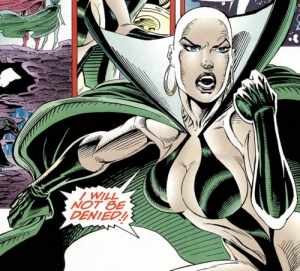
Moondragon (Heather Douglas) is a villain that was introduced in the Marvel universe in 1973. Thanos killed her parents and she was adopted by the Eternals. One of the things that makes her unique is that she was neither born with her psionic powers, nor was she involved in an accident. Instead she developed her powers while she was living with the Eternals.
She is most commonly known for her seduction of Thor as a lover for a short period of time. Her first appearance was in an issue of Iron Man. She was originally introduced as being bisexual and has maintained this status throughout the years.
Northstar
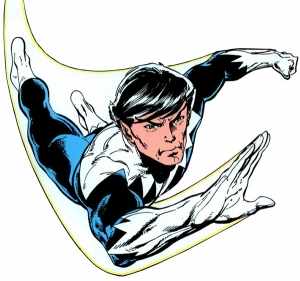
Northstar (Jean-Paul Beaubier) is a superhero that was created for the Marvel universe in 1979. After his parents died when he was a child, he and his twin sister were taken in by the Martins. They sent his sister to a Catholic boarding school, and he was eventually put into foster care. After his foster parents died, he turned to petty crime. He was caught stealing by the man who would become his mentor. As his mutant powers emerged he used his newfound speed to get better in skiing.
Using his powers, he won an Olympic gold medal. When he was introduced he was heterosexual. As his mutant powers emerged he started questioning his sexuality. The creator wanted to have him be homosexual from the beginning but at that time the editor-in-chief would not allow heroes to be gays or lesbians. A new editor took over that role for Marvel in 1992. This was the year that the writers had Northstar come out as being homosexual.
Batwoman
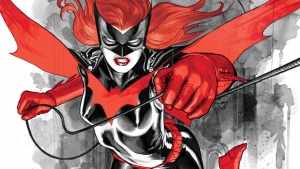
Batwoman (Katherine or Kathy/Kate Kane) is a DC superhero that was introduced in 1956. She was originally created to silence allegations that Batman and Robin were gay and in a homosexual relationship with each other.
Katherine was supposed to serve as a love interest for Bruce Wayne. She was killed by a member of the League of Assassins in 1979. However, this was the Earth-1 Kathy Kane. In 2006, an Earth-2 version of Katherine Kane was brought into DC comics. She goes by Kate Kane instead of Kathy Kane. Kate revealed that she was a lesbian to a fellow member of the Justice League in a conversation on the Watch Tower. Although DC has allowed her to be homosexual, the editor-in-chief has refused to let there be a gay marriage between Kate and her girlfriend. This has resulted in several members that were working on her titles to quit in their frustration that they were not being allowed to write the wedding.
Mystique
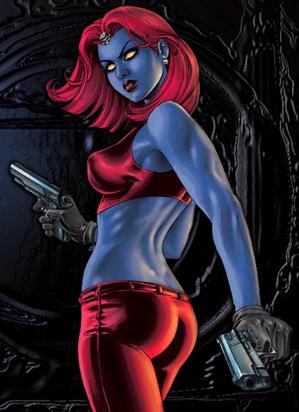
Mystique is a mutant whose power is shapeshifting. Occasionally she plays the part of a hero but most of the time she is a villain. Her real identity has not been revealed but she does have several aliases, of which include: Raven Darkholme, Mallory Brickman, Raven Wagner, and Holt Adler. She has several more aliases as well. Mystique’s sexuality is never really static since her shapeshifting ability allows her to chose what form she wants; the closest to her sexuality would be bisexual. She had one child, from an affair, named Graydon Creed.
She has also claimed to be the mother of Kurt Wagner (Nightcrawler). Mystique treats the mutant, Rogue, as her own daughter and even raised her. While she was raising Rogue she was going by Mallory Brickman, wife to Senator Ralph Brickman (where her adopted Daughter, Gloria, entered her life). She was with the Senator during a time in her life where she asked the United States government for forgiveness of her crimes in return for intelligence. There was a time in her criminal career where she was the lover to Destiny (Irene Adler). They stayed partners for some time, until Destiny ended up getting killed. Mystique is currently working with a branch of the X-Men where she has posed as Charles Xavier and Jean Grey at times.
Catwoman
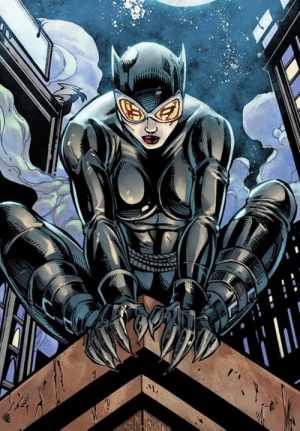
Catwoman (Selena Kyle) is a thief in the DC universe. She was introduced back in 1940 as a Batman villain. Throughout the years she has switched back and forth between a villain and a hero. In some issues she is a thief that needs to be stopped, and in other issues she teams up with Batman to help save Gotham. She has been a love interest to Batman in comics for years. However, there has been suspicions that she was bisexual because of her flirtatious manner with both sexes. During the Infinite Crisis storyline in DC comics, it is revealed that she has had a child named Helena but the father is never identified, she is also no longer Catwoman.
After some consideration Selena decides that she should not be raising a child because her past as Catwoman can be dangerous. She puts Helena up for adoption and ends up returning to her life as Catwoman. In 2015 Selena kisses a woman named Eiko, which confirmed the suspicions that she was bisexual. In the issues that have followed since the issue that the kiss occurred the writers have been developing a relationship between Selena and Eiko.
Opposition
Not everyone has been happy that comic books are incorporating super heroes that are homosexual. There has been some debate on whether role models should be allowed to be a sexuality that goes against the societal norm and the guidelines of several religions. It has been argued that children take a large part of who they want to be by comparing themselves with people that they look up to (Nussbaum, 2007). Mothers have expressed their concern that by being exposed to homosexual super heroes that children run the risk of being turned gay by looking up to that super hero that happens to be homosexual.
There has also been opposition from readers that are members of certain religions, stating that they would morally be uncomfortable if they were to collect a comic book title that included a homosexual super hero. Some have even tried to start movements in which they boycott the material until those who are homosexual are removed so that their children will not be tainted by being exposed to their characters. Others who oppose the idea of homosexual heroes have claimed that adding more LGBT (Lesbian Gay Bisexual Transsexual) characters is just a part of some gay agenda that is intended to break down the morality of society.
Support
Sexuality would not be a controversial issue if there was only one side of an argument present though. Contrary to the opposition’s approach about morals and the fear of turning people homosexual, supporters of having homosexual and bisexual characters in comic books have argued that there needs to be representation for everyone. That it is very important that people of all walks of life, religion, race, gender, and any number of other dividing factors have representation in the media that circulates in our society. That not only would this representation give those who fall under the LGBT category someone to identify with but it the presence of these characters will help to quicken the mainstream acceptance of people who are homosexual or bisexual. American society is changing in that there are a greater number of individuals who do not associate as being heterosexual.
It has been argued that these individuals deserve to have role models to look up to and that they can identify with. Supporters have also questioned the validity of the fear that positive role models who happen to be homosexual or bisexual will have a hand in turning their fans homosexual as well.
Interactions/ Reactions to Homosexual Characters in the Comic Book World
Just like people in real life have had mixed feelings about their being homosexual superheroes, characters within the realm of the comic book universes have also had mixed feelings and reactions to finding out that a character is homosexual. When Hulkling and Wiccan went to tell their parents that they were secretly superheroes, their parents thought that the two were coming out as gay. Their parents interrupted them before they could finish saying that they were superheroes, and told Hulking and Wiccan that they already knew and were happy that they had found each other.
Batwoman’s sexuality has gotten her good and bad attention in the comic universe. She gets kicked out of the U.S. military academy when it is discovered that she is a lesbian. When she returns back home, her father tells her that she did the right thing and kept her honor. Kate then chastises Renee (her girlfriend) for not telling her family about her being a lesbian like Kate did.
Another example of mixed feelings and reactions is the marriage between Northstar and Kyle. Jean-Paul had to deal with homophobia from fellow members of the X-Men. When he and Kyle gave out invitations to their wedding, there were members of Jean-Paul’s team that turned down the invitation because it was a gay marriage. However, there were other characters that accepted the invitation and did not let homophobia get in the way of attending a major moment in one of their team member’s life. These are only a few examples but they show that parallel to the real world, the comic book world is also split when it comes to dealing with those who are homosexual and how to view them.
Changing Dynamics in the Comic Universes
These characters are just a few of sixty-three different LGBT that exist in American comic books today. Throughout the last decades of the 1900s there were only a handful of LGBT characters introduced. That number has jumped in the past decade and a half for the number of characters that are not heterosexual who are being introduced or admit their sexuality in American comics. Among some of the recent characters introduced are Iceman, Alan Scott, Shatterstar, and Renee Montoya. There has been a lot of pressure on media forms of all types to make sure that every group (no matter their sexuality, race, religion, etc.) is represented in some positive form. It has taken decades but comic books are trying to catch up in the diversity of sexuality in characters that is present in American society itself.
Works Cited
Nussbaum, M.C. (2007). Frontiers of Justice: Disability, Nationality, Species Membership. Massachusetts: The Belknapp Press of Harvard University Press.
What do you think? Leave a comment.
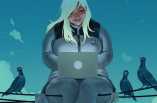
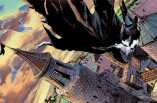
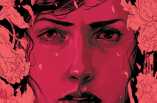
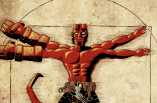
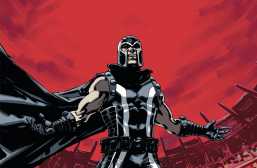
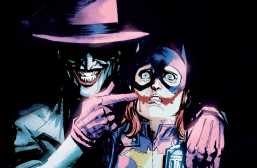
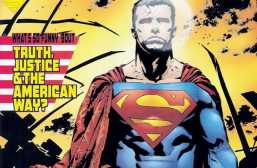
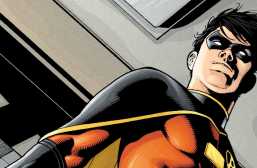
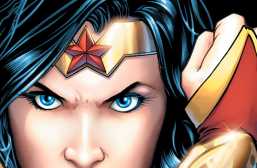
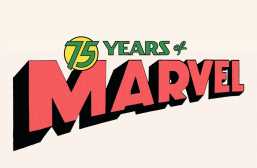
Pretty safe to say that most superhero comics are indeed talking ‘about’ women and not ‘to’ them.
So let me get this straight, every male superhero is ripped with a bulging 6-pack and no one ever bats an eye. Then when every female superhero is drawn like a model, it’s sexualization? So as I see it, there is a double standard against men in a way, or that women are waaaaaay too emotionally unstable.
I don’t really see what any of this has to do with the point of the article. It’s about sexuality (gay or straight and so on) not sexualization
When I watched the Avengers my gf drooled over Thor. I drooled over black widow. We still love each other.
A heart touching story.
I think some people are missing the point. this article doesn’t talk about how sexually characters are drawn really. It’s about their sexuality (gay, straight, bi, exct.)… either way, good analysis!
I think it’s great that comic creators are incorporating a larger variety of identities. It’s great that people in the LGBTQ community will have more characters to relate to.
Really great article, I like how comics are really getting into the LGBT community, it’s something for everyone. DC is also aiming towards saying a few characters are as well, so it’s gonna be a great year for comics, 2015 and 2016! I can’t wait to see what else they have in store. Great article!
Love the points made! It would be interesting to see how this interacts with sexialization of these characters as well.
Personally, the sexuality of a comic character has never turned me on in the least. Nor in video games. I don’t get it. I really don’t.
These industry trends are mirrored by the readership demographics.
Great article. The writers who were working on the Batwoman comic had a right for leaving the series. She is gay, so it only makes sense she would want to marry the person she loved. The fact that DC said no to this idea is a sign that the comic industry still needs to improve how they better represent the LBGTQ community.
This is an excellent essay. As the comic world addresses the issue of diversity the genre is accenting the tri-partite role of literature which is to entertain, inform and educate.
Personal views aside, this a very well-written article and the points are very valid. Diversity is a thing desired in every medium and there’s no better way to get it than for someone to step up and create it.
The whole nature of superheroes is sexual. All of it.
While it’s nice to see both of the leading comic publishing houses making strides in the right direction, I’d be interested in seeing a comparison of those efforts. For example, Marvel published the wedding of Northstar and his long-time boyfriend in 2012 (around the same time as same-sex marriages became legal in the state of New York), while apparently DC still won’t allow the marriage of Kate Kane and her girlfriend. It seems likely that’s not the only comparison that might be made. I’m generally more of a Marvel fan and reader, and their quick strides towards diversity—and making their fictional world look more like our real one—only makes me more inclined to favor their comics over those of DC.
Boys and action comics go together like Batman and Robin.
Greatly informative.
Very insightful article. Wow, these characters are very explicit.
it is obvious that the superheros who are lesbian or gay, bisexual or heterosexual are depicted for dropping back the existence of them in society. all of the people should accept them. they must have a normal life in society. Medias can help to introduce them to society and attract the acceptance of milieu for their present.
This is a great introduction to non-heteronormative characters in the mainstream Marvel and DC universes. One addition I would make would be Renee Montoya, also known as the Question. Her relationship with a woman is revealed by Two Face in Greg Rucka and Michael Lark’s 2003 Gotham Central No. 6-10. Montoya is considered one of the first out lesbian characters in the current DC universe and when Batwoman/Kate Kane is introduced she is in a relationship with Montoya.
THis article is just dumb.
Very interesting article. It’s particularly fascinating that most of the characters presented as bisexual or gay are females. Adding to that, the characters that are both male and gay/bisexual are not leading characters or even particularly represented in the same “Macho” masculine roles that characters like Iron Man, Thor, or Captain America are.
Kind of weirdly structured, but a solid article overall. I always freeze up when people call comics a “diverse” medium. I’m very used to the all white, male/female, straight dynamic that comics have had for the past almost century. While diversity has increased in the past decade, at times it felt very forced and representation for the sake of representation. Of course forced is better than none, but I’m still not sure comics are to the point where anyone could call them diverse. Progressing, but not quite there.
I need to get some back issues and read more about Moondragon. A bisexual character in the Marvel universe in 1974 is interesting, but the fact that she was presented as a villain deflates my excitement a bit. At that time representation of non hetero characters as Evil or deviant was not actually progressive.
I had no idea that comics were this detailed in personal life. I’ve only really seen comic movies… soo… Interesting to learn that they deal with these issues too.
It’s so important to blow the lid off gender representations especially in comics. Here, we have so many incredible heroes and villains and even they have to defend themselves when it comes to their sexuality. It makes me wonder when and if the scrutiny will end. Yes, many of these comics are a mixture of the impossible vs the possible, the realistic vs the fake, but when it comes down to backstories, emotions, gender, and sexuality, the characters should be as diverse as the humans reading the comics are.
For further reading on this subject, it’s worth taking a closer look at Watchmen. Though written in the ’80s, its reminiscence to the original Minutemen of the 1940s contains a substantial (albeit almost entirely subtextual) discussion of LGBT superheroism in a time when nobody was even able to talk about it. Silhouette was kicked off of the team when the others discovered that she was a lesbian, fearing that it would hurt the group’s public image if word got out about it. Similarly, Hooded Justice and Captain Metropolis were having a secret affair, but – seeing that they were more popular and central to the team’s existences than Silhouette was – the others all jumped through hoops to keep their relationship concealed. This required Silk Spectre to masquerade as HJ’s girlfriend during all public appearances, a recommendation made by her agent (and later husband) Laurence Schexnayder.
interesting topic but this article would have benefited tremendously from a good copy-edit.
Good article. Thank you for your sharing. I WILL focus on this opition.